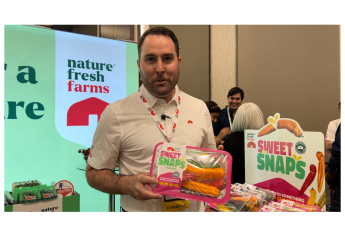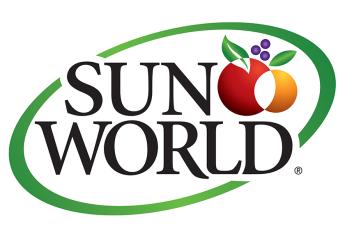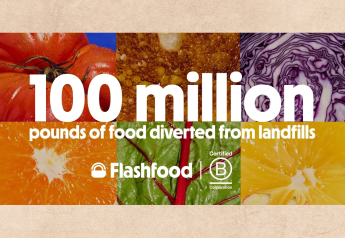Firework’s social-media-style video content aims to spark sales at Walmart, The Fresh Market

What if grocery retail could capture the fun and engagement of short social-media-style videos and turn them into shoppable and promotable profit centers?
Firework, a San Mateo, Calif.-based video e-commerce solution, recently signed a partnership agreement with Walmart Connect, a closed loop omnichannel media business of Bentonville, Ark.-based Walmart, with that goal in mind. The collaboration aims to bring livestream and premium shoppable video content to Walmart’s customer experience. The videos are also available to advertisers.
While the Walmart launch included livestream and shoppable videos for featured products in the beauty category, Firework has also partnered with other major grocers on fresh-food-focused, shoppable short-form and livestream videos, including Boise, Idaho-based Albertsons Cos. and The Fresh Market of Greensboro, N.C.
“Traditional grocery retail websites typically feature old school, static coupon images,” Firework Chief Business Officer Jason Holland told The Packer. “That is the traditional retail engagement experience.”
With Firework, consumers can see a shoppable short video or cooking classes with an add-to-cart functionality that allows users to shop within the video as well as click back to the product landing page to add a purchase to their cart — all while remaining in the retailer’s online ecosystem, he added.
In August, The Fresh Market surpassed 365 days of total watch time for its Firework-enabled video content, including all short-form, shoppable video and live commerce content across the company's owned media channels, according to a news release.
The Fresh Market said it had seen rapid, double-digit growth across a variety of key performance indicators, including:
- more than 97% increase in conversion rate for Firework videos on TheFreshMarket.com versus site-wide average since launch
- more than 47% increase in click-through rate for dedicated Firework emails versus overall email click-through rate pre-launch
- double-digit increase in click-through rate and ad recall on Facebook posts featuring Firework video versus those without
“A differentiated customer experience has been integral to The Fresh Market's identity since our founding,” Kevin Miller, chief marketing officer at The Fresh Market, said in the release. “With Firework, we’ve finally been able to replicate those premium customer experiences in the digital sphere — and based on the response from our customers, it has been a resounding success. What we’ve been able to accomplish with Firework in such a short period of time has been nothing short of transformative.”
A market ‘ripe for reinvention’
Rather than rooted in media, Firework’s origins stem from data science, artificial intelligence, math and machine learning, Holland told The Packer.
Prior to co-founding Firework in 2017, CEO Vincent Yang founded the business-to-business data and analytics company EverString, while President Jerry Luk was one of the first engineers at LinkedIn.
In the beginning, Holland says Firework was an app that competed with TikTok, but its mobile, swipeable video skewed more PGC or professionally generated content, whereas TikTok went down the UGC or user-generated content road.
But while Firework’s patented tech caught the eye of Google, which attempted an acquisition in 2019, Yang and Luk decided they didn’t want to be acquired. Instead, they would go after the open web, which Holland says they saw as a “massive addressable market” that was “ripe for reinvention.”
“Because if you think about what the walled gardens have done through the lens of upgrading the digital consumer experience — whether it's consuming content, shopping for products, etc. — the walled garden ecosystem with short, vertical mobile-first video has accelerated ahead, whereas the open web, with websites and apps for retailers and direct-to-consumer brands, is really far behind,” Holland said. “So, we said let’s take the tech to those ecosystems to bring the best that the walled gardens have deployed from a digital consumer perspective, and then overlay those with shoppable video, live commerce and short video capabilities.”
Enter Rick Zhuang. Former head of engineering for Tencent and China’s largest online retailer, Alibaba, Zhuang joined the Firework team in 2020 as chief technology officer.
Firework’s first deployment in the grocery retail ecosystem was with Albertsons more than a year and a half ago, with the goal of helping the grocer become the “Pinterest of food,” Holland said.
Bringing the in-store experience online
While there’s no substitute for perusing the produce department in-store, shoppable and livestream video may be the next best thing, says Holland.
When casting these videos, think about your friendliest in-store sales associates, your produce manager with an infectious personality, passionate enthusiasts and the experts who’ve been working in your produce department for years, he said.
“These are the people your customers want to be greeted by in a digital asset,” Holland said. “I think Gen Z, in particular, has become so skeptical of celebrity endorsements. There’s an authenticity associated with knowing that you’re hearing from an expert in this particular category, whether it's produce, meat or beauty.”
Then think about the personal connections in an in-store shopping experience, he says.
“When I walk into the produce department, I’m usually greeted by someone who will say, ‘Can I help you find something or is there something in particular you'd like to know about a produce item?’ And that just doesn't exist in the digital ecosystem — unless you deploy video through which you give personnel the ability to introduce themselves and talk about what it is that they're passionate about,” Holland said.
The videos also can be geo-targeted to the shopper base in a particular zip code.
“So, when customers walk into the store, they can say to the produce manager, ‘I just saw you on a livestream. Thank you for walking me through how to grill asparagus.’ That's an enriched digital experience and one of the things that we're most excited about,” Holland added.
When it comes to product detail, whether it's vegetables, fruits or cosmetics, shoppable videos allow retailers to engage with customers in a far more personal and authentic way, he said.
Firework offers a variety of content services, says Holland. It has a library of some 2 million pre-existing short videos verticalized into cooking, fashion, beauty, sports and more, for which it owns the rights. Cooking-related videos include fresh meat, seafood and produce content as well as professionally curated cooking classes and lessons.
Firework can take any long-form video and convert it to mobile for a swipeable rendering. “That's a powerful way to take long-form content that you've already produced and transfer it to a vertical short-form that we will make shoppable,” Holland said.
Firework also has in-house content creation and video editing teams, with the ability to manage and curate livestreams — from sourcing talent to writing the script to directing and producing the videos.
“We then take all of that content and amplify it on the open web,” Holland said. “The difference is that when a digital consumer clicks on that asset in a walled garden, they’re taken back to the owned asset of the retailer, so the retailer owns the first-party data. They own the conversion associated with the purchase propensity of that consumer,” explained Holland, adding that 96% of digital consumer transactions in Western markets outside of China don’t take place in a walled garden but rather on a retailer’s website or app.
“That's where the short and shoppable video in the livestream has to live first. It can power out into the open web from there, but everything has to loop back to the retailer’s own asset,” said Holland.
Inspiring purchase through personalization
Given today’s labor challenges, online shoppable video may also help to strengthen personal connections between staff and customers and consumers and the products they buy.
Firework has partnered with a retailer in Japan who, since the COVID-19 pandemic, has struggled to hire in-store sales staff. To enhance its in-store selling capabilities, the retailer has started to QR code all of its shelves.
If customers want to learn about a particular product or want to see a demonstration on how to use the product, they swipe their phone over the QR code and are immediately taken to the Firework-powered, short shoppable video and livestream experiences, where those questions are answered for them, Holland said.
“Consumers crave inspiration, and they are looking for an enriched way to engage with the brands that they buy and the retailers with whom they shop,” Holland said. “And if you don't start talking to them in a far more personalized, inspired and creative way, they'll find those outlets somewhere else.”
In-video checkout
Earlier this month, Firework released its first fully native, in-video checkout solution for the West’s burgeoning video commerce market. The new technology enables seamless, single-click purchase functionality within Firework’s shoppable and livestream videos, providing brands a frictionless shopping experience on both their own websites and across the open web, according to a release.
“Video continues to play an increasingly important role in the digital customer journey — enabling richer, more engaging experiences of brands and their products and, in turn, influencing purchase decisions,” said Eva Wang, head of commerce and partnerships at Firework. “With Firework In-Video Checkout, brands can dramatically accelerate the path-to-purchase, closing that all-important gap between impression, engagement and conversion.”
Firework says online sales are at stake when the checkout experience doesn’t meet consumer expectations. It points to research from Baymard Institute, which found that the average e-commerce website could realize a 35% increase in conversion rates simply by improving its checkout design.
Firework’s new In-Video Checkout feature can be implemented across all livestream and short-form Firework video modules — on both users’ own digital properties and in off-site, programmatic ads, according to the company.
In-Video Checkout customers fill in their billing information with their first purchase, after which their name, email address and shipping location are securely stored for future use — allowing returning customers to complete the entire online checkout experience with a single click, inside the video module. Customers can also apply coupons and promo codes and select from multiple payment options without ever exiting the short video or livestream experience.







